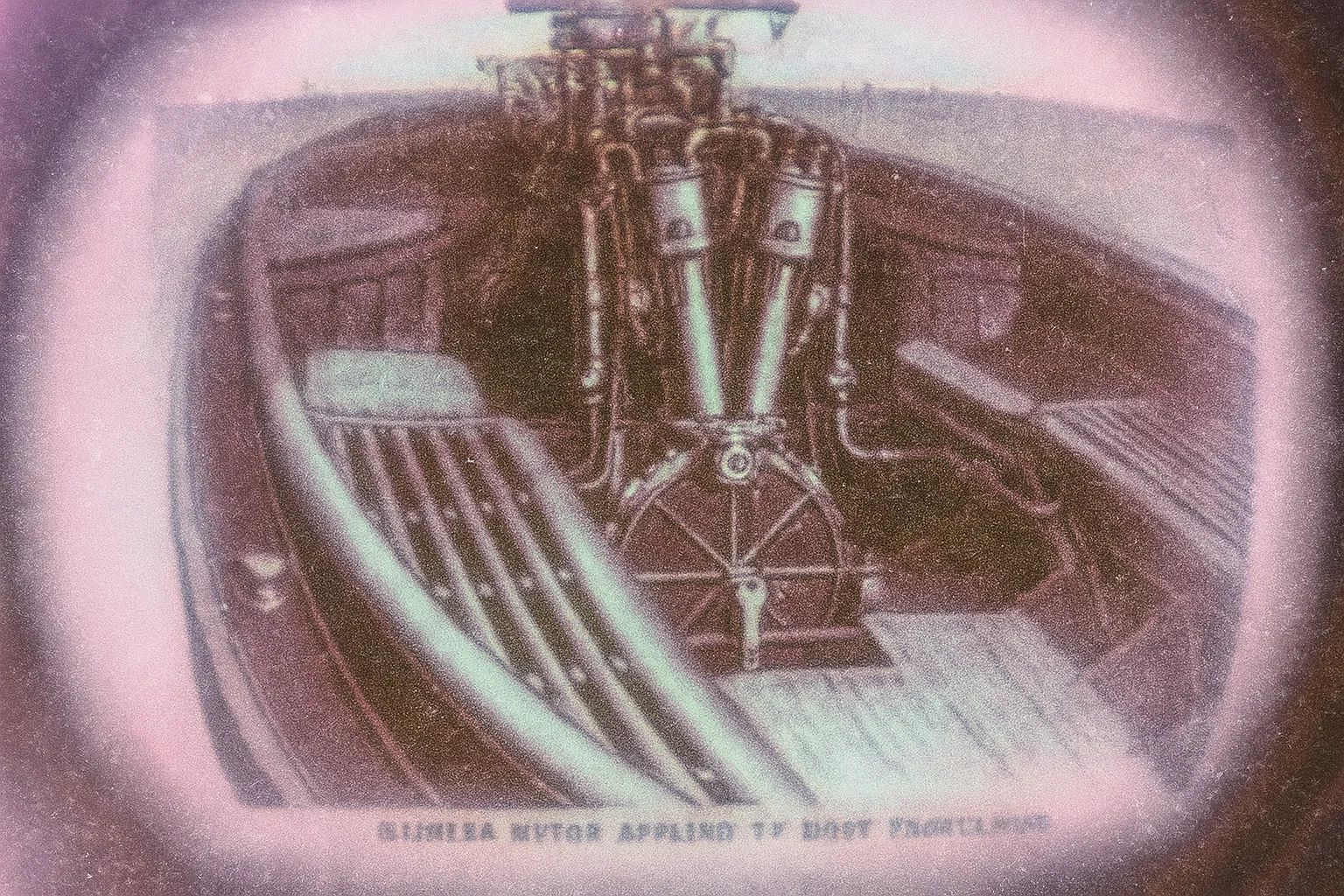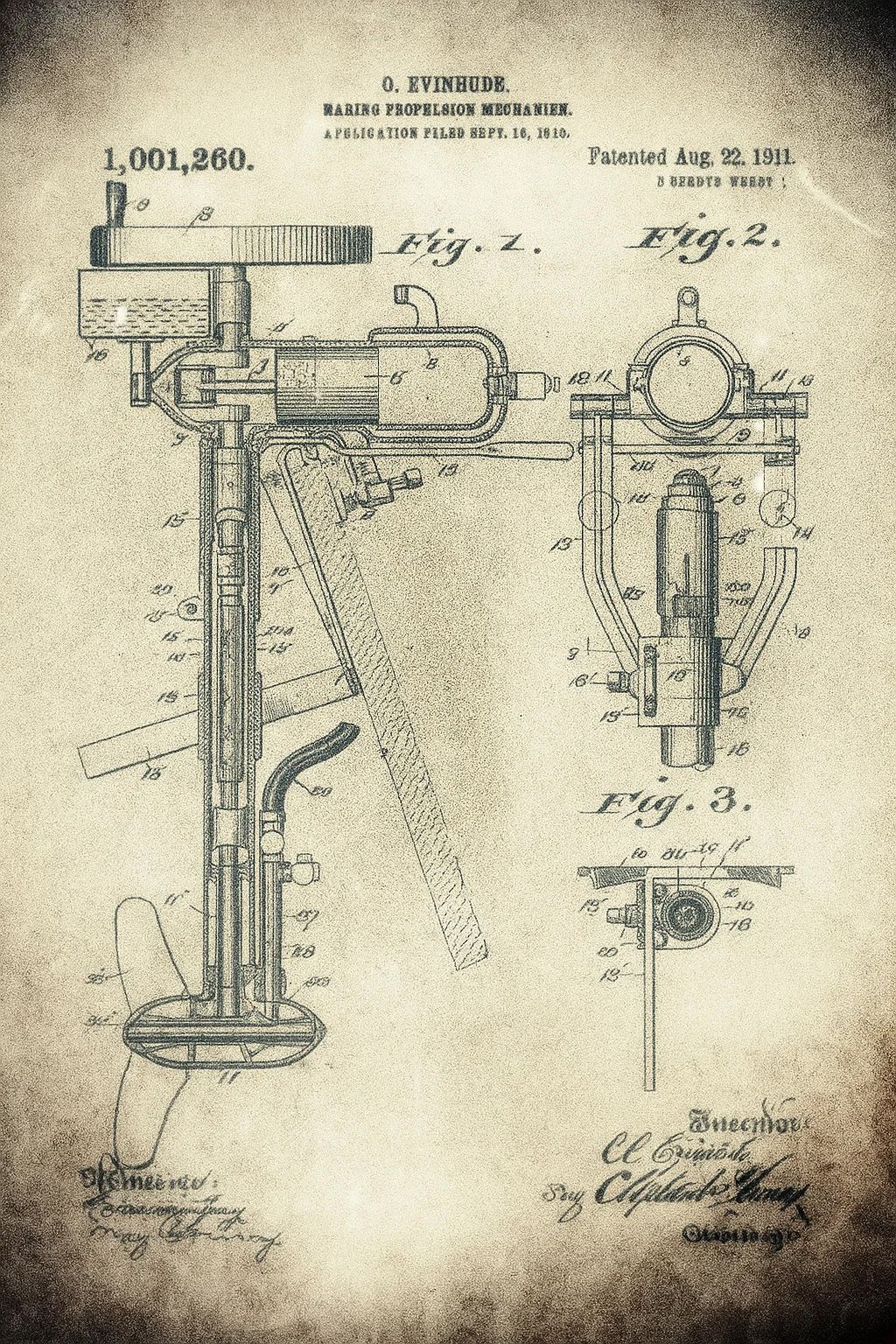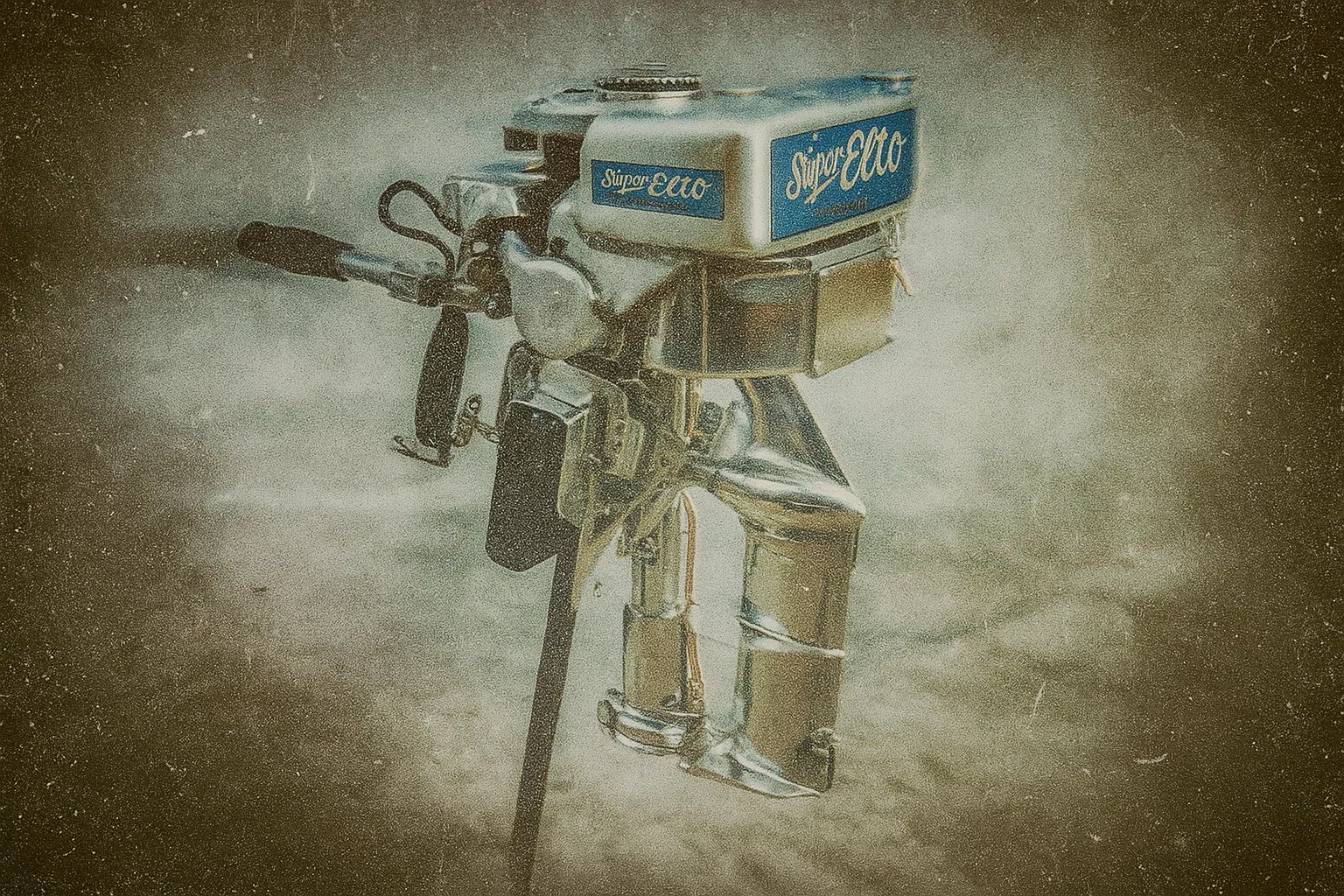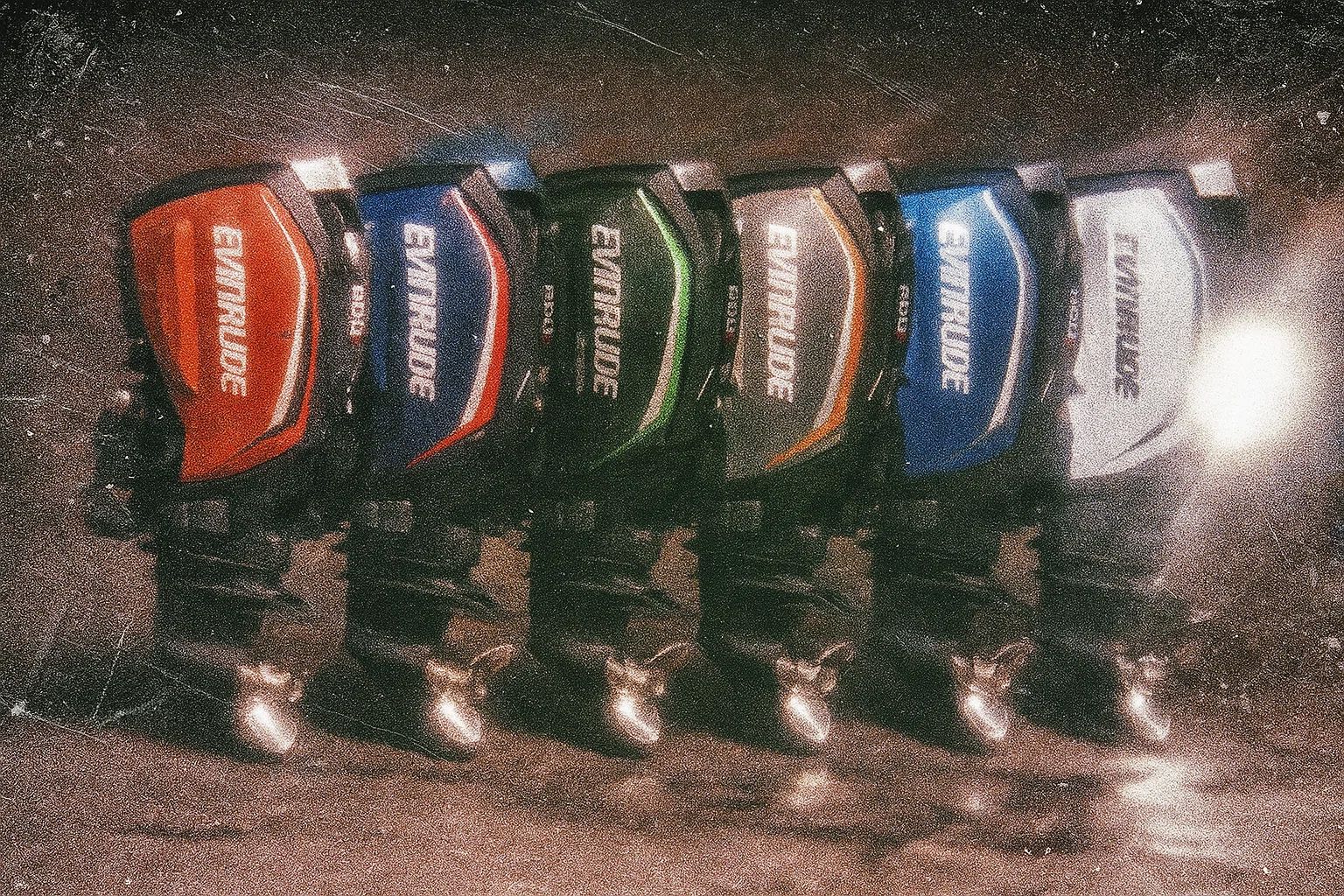The Evolution of Outboard Motors and Evinrude’s Legacy
Evinrude and The History Of The Outboard Engine
Outboard motors have revolutionized boating. They offer portability, power, and versatility. Consequently, they’ve transformed recreational and commercial marine activities. Moreover, their development spans over a century. This journey reflects engineering breakthroughs, market needs, and environmental demands. Notably, Evinrude played a significant role. Therefore, this article explores outboard motor history, Evinrude’s contributions, and future marine propulsion trends.
Origins of Outboard Motors
In the late 1800s, boats used sails, oars, or heavy inboard engines. These were expensive and impractical for small crafts. However, internal combustion engines sparked new possibilities. For instance, in 1896, American Motors Company adapted gasoline engines for boats. Yet, these lacked true outboard integration.
Meanwhile, in 1905, Cameron B. Waterman changed the game. He patented the first successful outboard motor. Inspired by motorcycle engines, his 2-horsepower, two-stroke model weighed 40 pounds. Additionally, it combined an engine, propeller, driveshaft, and rudder. By 1910, Waterman’s company sold thousands. Thus, it became popular among fishermen and recreational boaters, laying the industry’s foundation.

19th Century Inboard Engine, Image by VÉHICULE
Evinrude’s Groundbreaking Innovations
In 1909, Ole Evinrude entered the scene. He introduced his outboard motor, widely credited for popularizing the technology. Interestingly, a 1907 rowing trip inspired him. Frustrated while fetching ice cream for his future wife, Bess, he designed a 1.5-horsepower, two-stroke motor. It weighed 62 pounds. Launched in 1910, Evinrude sold over 1,000 units in its first year. Bess managed marketing, boosting success. Consequently, simplicity and affordability made Evinrude a market leader.
Furthermore, Evinrude kept innovating. After selling his company in 1913, he returned in 1921. He launched the Evinrude Light Outboard Motor Company. For example, the 1922 “Evinrude Lightweight” delivered 2 horsepower and weighed under 50 pounds. It featured a folding tiller for easy storage. In the 1930s, Evinrude merged with Johnson Motor Company, forming Outboard Marine Corporation (OMC). Additionally, the 1933 “Folding Shaft” model tilted to avoid obstacles, becoming a standard feature. Moreover, corrosion-resistant materials like bronze propellers enhanced durability.

First Evinrude Engine, Image by VÉHICULE
Understanding Outboard Motor Mechanics
An outboard motor is a self-contained system. It mounts on a boat’s transom. Its main components include:
- Powerhead: Contains a two-stroke, four-stroke, or electric engine, producing 2 to over 600 horsepower.
- Midsection: Houses the driveshaft, linking the engine to the lower unit.
- Lower Unit: Features the gearbox, propeller, and skeg, converting power into thrust and enabling steering.
- Additional Systems: Fuel, ignition, cooling, and exhaust systems improve efficiency.
Modern outboards incorporate advanced features. For instance, digital throttle, GPS integration, and touchscreen displays like Mercury’s VesselView or Yamaha’s Command Link provide real-time data.
Outboard Growth and the Golden Age
During the 1910s and 1920s, outboards advanced rapidly. Manufacturers adopted aluminum alloys, reducing weight and corrosion. By the 1920s, engines reached 10 horsepower. For example, Johnson’s 1926 “Big Twin” offered 6 horsepower for larger boats. Additionally, the 1930s introduced remote steering and costly electric starters. By 1929, U.S. sales hit 30,000 units annually, driven by fishing and leisure.
After World War II, a golden age emerged. Evinrude’s 1958 “Starflite” series featured a 50-horsepower V4 engine, ideal for waterskiing. Meanwhile, Mercury’s 1957 Mark 75 delivered 60 horsepower. In 1964, Honda introduced the GB30, the first four-stroke outboard. It was smoother and more efficient. Consequently, Yamaha and Suzuki joined in the 1960s, intensifying competition.

Elto Folding Engine, Image by VÉHICULE
Environmental Pressures and E-TEC Breakthrough
In the 1970s, environmental concerns arose. Two-stroke engines produced high emissions. Thus, 1990s EPA standards pushed innovation. Initially, Evinrude’s 1996 Ficht system failed, causing OMC’s 2000 collapse. However, Bombardier Recreational Products (BRP) acquired Evinrude. In 2003, they launched E-TEC, a direct-injected two-stroke system. It cut emissions by 75% and met EPA and EU standards. Additionally, it needed no maintenance for three years. In 2005, it won the EPA Clean Air Excellence Award.
Furthermore, the 2014 E-TEC G2 series offered 115 to 300 horsepower. It featured digital controls and hydraulic steering. Consequently, it earned the 2015 NMMA Innovation Award. However, E-TEC had drawbacks. Parts were costly, diagnostics were dealer-only, and support varied. Some boaters loved its lightweight design, while others faced coil or injector issues.

Evinrude E-TECH Series, Image by VÉHICULE
Market Shifts and Evinrude’s End
Despite E-TEC’s success, four-stroke engines gained favor. They were quieter and easier to maintain. For instance, Yamaha’s F-series and Mercury’s Optimax led the market. Evinrude focused solely on two-strokes, avoiding four-strokes or hybrids. Consequently, this limited its adaptability. Moreover, 2020’s COVID-19 supply chain issues hit hard. Thus, on May 27, 2020, BRP ended Evinrude production, focusing on other marine products.
Today’s Outboard Innovations
Modern outboards are powerful and advanced. For example, Mercury’s 2021 Verado V12 delivers 600 horsepower. Yamaha’s 2018 XTO offers 450 horsepower. Additionally, electric outboards like Torqeedo’s Deep Blue and Mercury’s Avator (2022) provide zero-emission options. In 2024, Yamaha unveiled a hydrogen-powered outboard prototype, targeting carbon neutrality by 2050. Meanwhile, the outboard market, valued at USD 10.6 billion in 2024, may reach USD 20.94 billion by 2034.
Furthermore, smart technologies enhance performance. IoT monitoring and joystick controls improve user experience. Lightweight materials like carbon fiber boost efficiency. Moreover, EPA Tier 3 and EU RCD II regulations drive cleaner designs. Commercial and military uses, like fishing and patrol boats, also grow, with mid-range engines in demand.
The Future of Marine Propulsion
Outboard motors have a rich legacy. From Waterman to Evinrude, they’ve shaped boating. Today, manufacturers focus on sustainability and affordability. For instance, electric, hybrid, and hydrogen engines are emerging. Additionally, smart features like autonomous docking are on the rise. Mercury and Yamaha lead these innovations.
Evinrude’s E-TEC blended two-stroke power with eco-friendly design. Although discontinued, its legacy endures. As the industry balances performance and sustainability, outboard motors will continue driving boating’s future.












